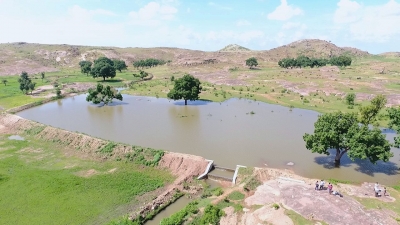
One village in the drought-hit Bundelkhand region is an oasis. Wondering how that is possible? Find out…
Bundelkhand, spread over Uttar Pradesh and Madhya Pradesh, is one of India’s most water-scarce areas. But one village here is a lush-green oasis.
Jakhni village in Banda district of Uttar Pradesh revived traditional water conservation techniques about a decade ago when it was hit by a drought. As a result, the village now has 32 wells, 25 handpumps and four ponds, all of which are brimming with water. While the groundwater level was below 24 m earlier today it is at 2.5-3 m. Many of Jakhni’s inhabitants who had left in search of water and better livelihoods, have now returned due to the remarkable turnaround. All this has been achieved by undertaking certain measures.
The inhabitants built bunds (called med bandhi) around every farmland to contain rainwater in the field itself, which in turn helps retain soil moisture for a longer time. The villagers also planted trees alongside these meds. This concept, known as med-par-ped, contributed to the rise in the water level.
Zero water wastage
They adopted the ‘zero water wastage principle every single drop of water is utilised. Small drains were constructed, each drain being connected to a house. All the wastewater from the houses gets collected at a pond and is used in the farms.
The residents replenished their ponds by desilting them and removing encroachments. They dug furrows around them and planted shrubs there. Similarly, they trenched their wells and stopped dumping garbage there.
As paddy and lentils require a lot of water, the villagers decided to grow more vegetables like brinjal, spinach, coriander and mustard-crops which can grow on soil moisture. Jakhni is today one of the best sources of fresh vegetables in Bundelkhand.
Called ‘Jalgram’*, Jakhni has become a role model to surrounding villages. There are plans to establish an environment university in Jakhni as well as a research centre for indigenous conservation methods.
Picture Credit : Google




